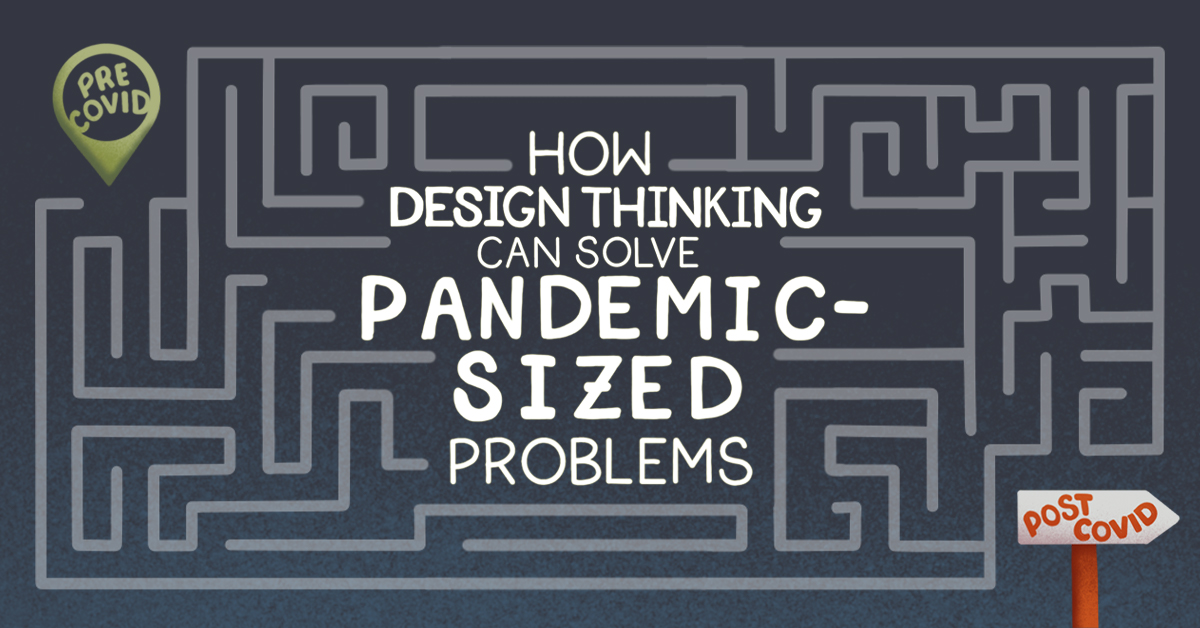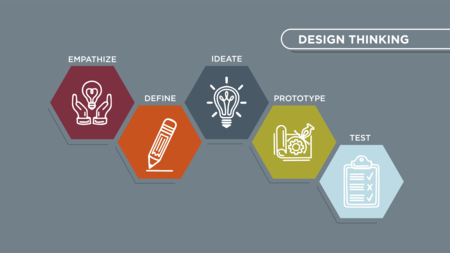

HOW TO ‘DESIGN THINK’ YOUR BRAND OUT OF A PANDEMIC
As marketers, strategists and communicators, it is important to recognize that the world around us is changing, and so too are the problems consumers are facing. These new problems become new questions, and new questions become new opportunities. So how do we address them? We believe the answer begins with design.
At HY, design isn’t just illustrations, animations or typography. Design is the way something works, and a way of thinking. When David Kelley, founder of IDEO and Stanford’s d.school, coined the phrase “design thinking” and formalized the process, he claimed it would enable its users “to come up with a solution that nobody has before.”
Design thinking becomes even more important when we need to solve new challenges caused by some of the lasting impacts of COVID. Here are the steps we follow at HY for our clients.
Empathize: How do people feel?
Ask why, not what. When seeking to understand new problems and how to solve them, it’s important to paint the whole picture.
Critical problems require empathy to arrive at human-centered solutions. To get to the root of these problems, we need to fully understand them by being able to put ourselves in our user’s shoes. To do this, marketers need to first reset their expectations regarding how consumers will engage with their brand. Some products and services are not being viewed or used in the way they were back in February. Understanding that change and the root of the cause via empathy is the first step to solving the new problem.
Define: What’s really the problem?
How can the information we uncovered in the empathy phase help us reframe the way we previously understood our audience and their problem?
After empathizing with the people who experience our challenge first-hand, it’s important to unpack the key information we learned. Doing so helps us better define the specific pain points, needs, desires and emotions that influence their current decisions and behaviors. By defining these insights well, and with empathy, marketers will be well on their way to creating useful solutions that can change those decisions and behaviors.
Prototype: How can we make our solution real?
Positivity is momentum. The three magic phrases used throughout design thinking – “I like,” “I wish,” and “How might we?” – help channel criticisms or detractions into proactive enhancements.
Okay, time’s up, that was fun! Remember how we were just flaring? Lots of ideas? Now, it is time to focus. Design thinking is not just pie in the sky. It forces you to prototype your concept, make something, and see it through the eyes of the end-user. And when I say “make” I don’t mean that you need a production facility. This may require roughs, mock-ups, post-it notes and whiteboard drawings. Making things forces you to talk about them, to disagree about them, to make them better. When you initiate a process that forces you to make, you are inevitably going to fail. But failure often leads to new discovery and future success.
Test: Does our solution solve the problem?

While you may love an idea, if it does not pass the stress tests of the target end-user, you may have to bounce back to an earlier phase of the process.
The testing phase is all about finding holes in your prototypes and patching them. If they can’t be patched, move onto the next one. It’s important to get different perspectives by inviting people from various areas of expertise to pilot your prototype. Find people who are familiar with the problem. Find people who have never heard of the problem! Then test the prototype through the eyes of your end-user, or better yet, with the end-users themselves. Letting them finally interact with your product or solution is the most rewarding part of the process. Depending on the feedback you receive, and because design thinking is such an iterative process, you may need to be ready to go right back to the beginning of the process all over again!
I have always believed that design thinking is a great way to solve problems, and after a little reflection, I believe it even more. The new post-COVID era will present new problems to solve, and I am excited to observe the innovations that will result. If you get as excited about this kind of stuff as we do, the d.school offers some great resources to learn more about the iterative process, and so do we. But not everyone is tasked with solving the world’s next problems, and that is okay. But if you are, Hoffman York is here to help. Let’s design think together.